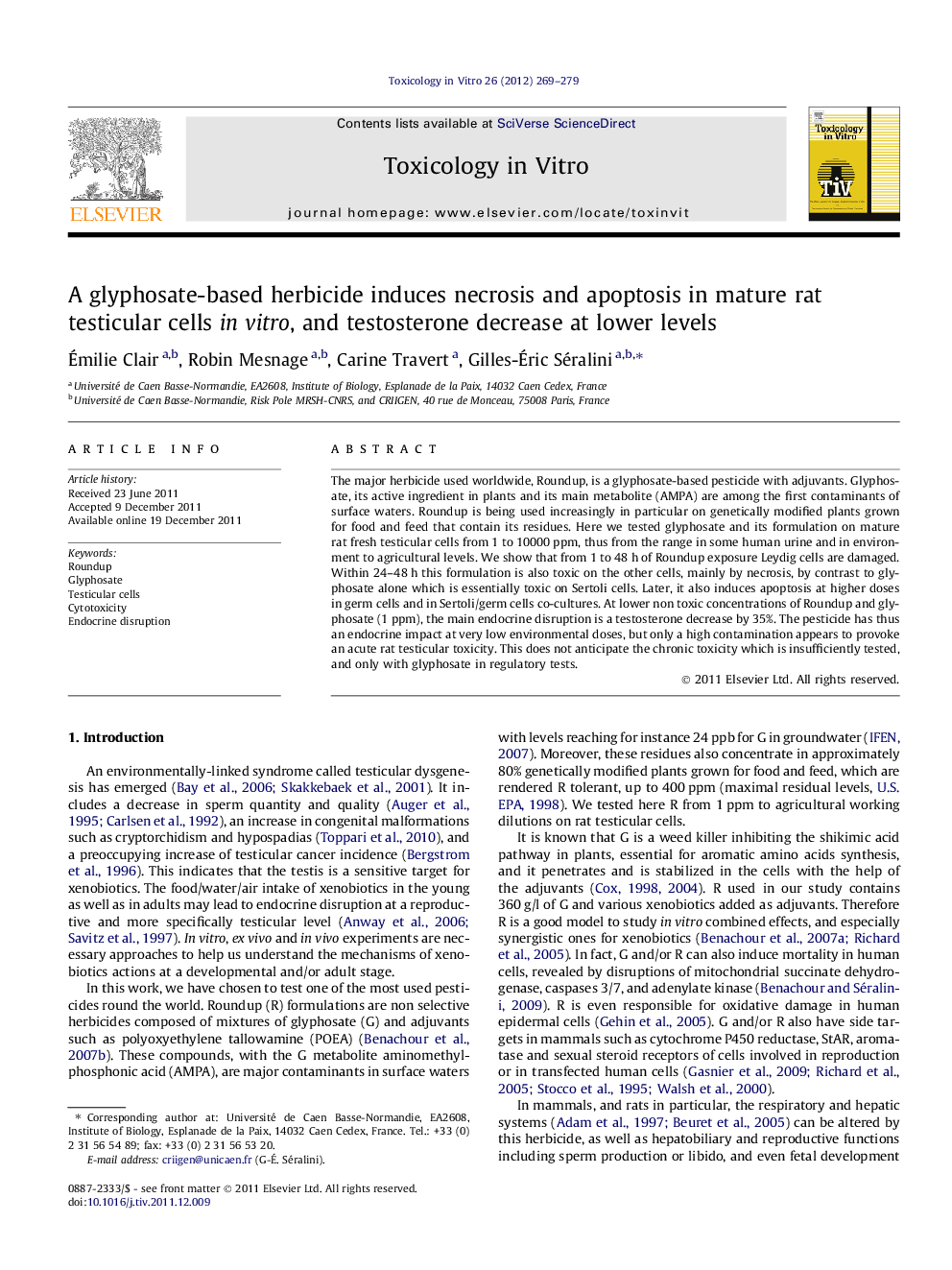| Article ID | Journal | Published Year | Pages | File Type |
|---|---|---|---|---|
| 5863064 | Toxicology in Vitro | 2012 | 11 Pages |
The major herbicide used worldwide, Roundup, is a glyphosate-based pesticide with adjuvants. Glyphosate, its active ingredient in plants and its main metabolite (AMPA) are among the first contaminants of surface waters. Roundup is being used increasingly in particular on genetically modified plants grown for food and feed that contain its residues. Here we tested glyphosate and its formulation on mature rat fresh testicular cells from 1 to 10000Â ppm, thus from the range in some human urine and in environment to agricultural levels. We show that from 1 to 48Â h of Roundup exposure Leydig cells are damaged. Within 24-48Â h this formulation is also toxic on the other cells, mainly by necrosis, by contrast to glyphosate alone which is essentially toxic on Sertoli cells. Later, it also induces apoptosis at higher doses in germ cells and in Sertoli/germ cells co-cultures. At lower non toxic concentrations of Roundup and glyphosate (1Â ppm), the main endocrine disruption is a testosterone decrease by 35%. The pesticide has thus an endocrine impact at very low environmental doses, but only a high contamination appears to provoke an acute rat testicular toxicity. This does not anticipate the chronic toxicity which is insufficiently tested, and only with glyphosate in regulatory tests.
⺠From 1 h of Roundup exposure Leydig cells are reacting. ⺠Within 24-48 h Roundup is toxic from 0.05%, by contrast to glyphosate alone. ⺠Glyphosate alone from 0.005% induces membrane degradation in Sertoli cells first. ⺠Glyphosate induces apoptosis in germ cells or in Sertoli/germ cells co-cultures. ⺠Roundup has an impact at very low environmental doses on isolated testicular cells.
